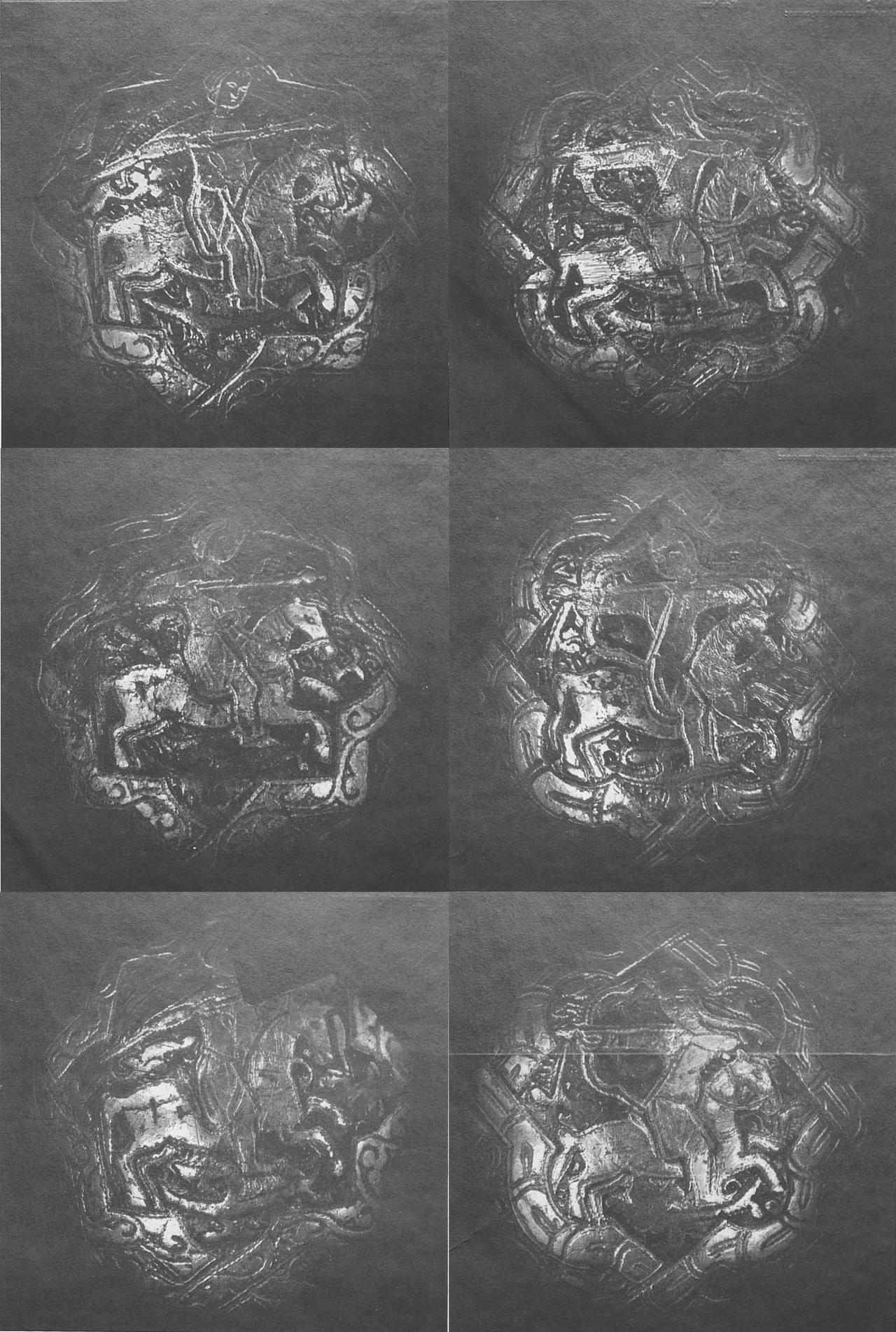Medallions on a metal dish from the Prince's Palace, Chernigov, late 12th century AD, Byzantine or Caucasian.
State Hermitage Museum, St. Petersburg.

Decorations on two almost fully identical bowls are free variations on themes from the poem “Diginis Akritas”.
One of them was found near the village of Vilgort in the Urals area, another in Chernigov,
on the site of the prince’s estate which was gutted in 1239 during the Mongol invasion (fig. 1-82).
The scenes depicted on the bowls are all permeated with a secular, knightly spirit.
Two motifs clearly stand out, just as they do in the poem; the war theme—feats of arms, glorification of hyperbolised prowess and romance.
The heroic theme is represented by scenes of combat between lightly armed Greek horsemen and mounted Seljuk archers, as well as by the symbolic figures of lions, gryphons, wolves and birds of prey;
the lyrical theme is represented by confronted birds and feminine sirens.
The plants background may have been intended to convey the “paradise” around the hero’s palace on the Euphrates.
The central medallion on the bottom of the bowls show Akritas playing the either for his beloved, the beautiful Eudokia surrounded by beasts and birds charmed by the music.
The harmony between the animal and vegetable kingdom and the hero is a regular feature of the lyrical-hero genre.
Source: Plates 59, 63, 68, 72, 76 & 80, Darkevich, Svetskoe iskusstvo Vizantii: X-XIII veka, (Moscow 1975). [990MB]
Secular Art of Byzantium: X-XIII centuries.
Referenced as figure 111 in Arms and armour of the crusading era, 1050-1350 by Nicolle, David. 1988 edition
111A—111D Silver dish, Byzantine or Georgian, late 12 Cent—early 13 Cents. (Hermitage Museum, Leningrad, USSR)
This particular object was found in the ruins of the princely estate at Chernigov which was destroyed by the Mongols in 1239 A.D.
The dish was almost certainly from the same place and period as those in Figs. 108—110.
The only horseman to wear any armour is one of the “Byzantines” (111C).
It is also interesting to note that only the “Turks” (111B and 111C) wear helmets, which was also the case in the other dishes.
Referenced as figure 235 in The military technology of classical Islam by D Nicolle
235. Metal dish from the Prince's Palace, Chernigov, late 12th century AD, Byzantine or Caucasian, Hermitage, Leningrad (Dar).
See also Medallions on a Bowl with courtly scenes and mounted soldiers, called the Ascension of Alexander the Great, Byzantine, 12th century. State Hermitage Museum, St. Petersburg, W-72
Other 12th Century Illustrations of Costume & Soldiers
Byzantine Illustrations of Costume & Soldiers

